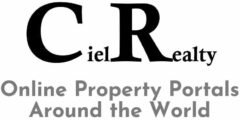Understanding Profit and Loss Statements for International Property Investments

Profit and Loss Statements for International Property Investments
Maximizing your international property investment requires understanding and tracking your financial performance through accurate Profit and Loss statements for international property investments.
When it comes to international property investments, it’s important to keep track of your expenses and income to ensure that your investment is profitable. A profit and loss (P&L) statement is a financial document that summarizes your revenues, costs, and expenses over a period of time, such as a month or a year. Here are the key details you need to know about creating and using a P&L statement for your international property investment:
Revenue
Revenue is the money you earn from your property investment, including rental income and any other sources of income. It’s important to accurately track your revenue to understand the profitability of your investment. For example, if you have a rental property that generates $1,000 per month in rent, your revenue for the year would be $12,000.
Expenses
Expenses are the costs associated with your property investment, including property taxes, insurance, maintenance, repairs, and any mortgage payments. It’s important to track your expenses accurately to understand the total cost of owning and maintaining your property. For example, if you paid $2,000 in property taxes, $1,500 in insurance, and $3,000 in maintenance and repairs, your total expenses for the year would be $6,500.
Net Income
Your net income is the difference between your revenue and expenses. It represents the profit or loss generated by your property investment over a given period of time. For example, if your revenue for the year was $12,000 and your expenses were $6,500, your net income would be $5,500.
Cash Flow
Cash flow is the amount of money that flows in and out of your investment over a given period of time. It’s important to track your cash flow to understand how much money you have available to reinvest in your property or to cover any unexpected expenses. For example, if your net income for the year was $5,500 and you paid $3,000 towards your mortgage, your cash flow for the year would be $2,500.
Creating a P&L Statement
To create a P&L statement, you can use a spreadsheet program like Microsoft Excel. Start by listing your revenue sources in one column and your expenses in another column. Then, subtract your expenses from your revenue to calculate your net income. Finally, subtract any mortgage payments from your net income to calculate your cash flow. Here is an example of what your P&L statement might look like:
| Revenue | Amount |
|---|---|
| Rental Income | $12,000.00 |
| Other Income | $500.00 |
| Total Revenue | $12,500.00 |
| Expenses | Amount |
|---|---|
| Property Taxes | $2,000.00 |
| Insurance | $1,500.00 |
| Maintenance | $3,000.00 |
| Mortgage Payment | $3,000.00 |
| Total Expenses | $9,500.00 |
| Net Income | $3,000.00 |
| Cash Flow | $500.00 |
In conclusion, creating and using a profit and loss statement is essential for understanding the financial health of your international property investment. By tracking your revenue, expenses, net income, and cash flow, you can make informed decisions about your investment and ensure that it remains profitable in the long run.
Renting Guide for Owners | A Comprehensive Rental Management and Investment
Important points to consider when analyzing Profit and Loss (P&L)
Here are important points to consider when analyzing Profit and Loss (P&L) statements for international property investments, along with formula and calculation examples:
1. Rental Income Calculation:
Rental Income = Number of Units × Average Rent per Unit × Occupancy Rate
Example:
If you own an apartment building with 20 units, each rented at an average of $1,500 per month, and the occupancy rate is 90%, the rental income would be:
Rental Income = 20 units × $1,500 × 0.9 = $27,000 per month
2. Operating Expenses Calculation:
Operating Expenses = Fixed Expenses + Variable Expenses
Example:
Fixed Expenses may include property taxes ($10,000 per year) and insurance ($3,000 per year), while Variable Expenses may include maintenance ($6,000 per year) and property management fees ($5,000 per year). The total operating expenses would be:
Operating Expenses = $10,000 + $3,000 + $6,000 + $5,000 = $24,000 per year
3. Net Operating Income (NOI) Calculation:
NOI = Rental Income – Operating Expenses
Example:
Using the rental income and operating expenses from the previous examples, the NOI would be:
NOI = $27,000 per month – $24,000 per year = $3,000 per year
4. Currency Exchange Impact Calculation:
Calculate the equivalent income and expenses in the investor’s home currency to assess the impact of currency fluctuations.
Example:
If the local currency weakens against the investor’s home currency by 10%, a rental income of 1,000,000 local currency units would be equivalent to 900,000 units in the investor’s home currency.
5. Return on Investment (ROI) Calculation:
ROI = (Net Profit / Total Investment) × 100
Example:
If an investor’s total investment in an international property is $500,000, and the net profit after one year is $50,000, the ROI would be:
ROI = ($50,000 / $500,000) × 100 = 10%
6. Cash Flow Analysis:
Compare the property’s cash inflows (rental income) and cash outflows (operating expenses, mortgage payments) to determine its cash flow.
Example:
If the property generates $27,000 in rental income per month and incurs $2,000 in monthly operating expenses and $3,000 in monthly mortgage payments, the monthly cash flow would be:
Cash Flow = $27,000 – $2,000 – $3,000 = $22,000 per month
Positive cash flow indicates the property is generating more income than its expenses.
7. Gross Profit Margin Calculation:
Gross Profit Margin = (Gross Profit / Total Revenue) × 100
Example:
If the property’s total revenue is $120,000, and the gross profit (total revenue – cost of goods sold) is $80,000, the gross profit margin would be:
Gross Profit Margin = ($80,000 / $120,000) × 100 ≈ 66.67%
Of course! Let’s continue with more important points, formulas, and calculation examples when analyzing Profit and Loss (P&L) statements for international property investments:
8. Net Profit Calculation:
Net Profit = Total Revenue – Total Expenses
Example:
If the total revenue from an international property is $150,000, and the total expenses, including operating expenses, taxes, and interest payments, amount to $80,000, the net profit would be:
Net Profit = $150,000 – $80,000 = $70,000
9. Debt Service Coverage Ratio (DSCR) Calculation:
DSCR = Net Operating Income (NOI) / Debt Service
Example:
If the NOI of an international property is $60,000, and the annual debt service (loan payments) is $40,000, the Debt Service Coverage Ratio would be:
DSCR = $60,000 / $40,000 = 1.5
A DSCR above 1 indicates that the property generates enough income to cover its debt obligations.
10. Amortization Expense Calculation:
Amortization Expense = Total Loan Amount / Loan Term
Example:
If an investor takes a loan of $500,000 with a 20-year term, the annual amortization expense would be:
Amortization Expense = $500,000 / 20 = $25,000 per year
11. Depreciation Expense Calculation:
Depreciation Expense = (Property’s Initial Cost – Salvage Value) / Useful Life
Example:
If a property was purchased for $1,000,000, with an estimated useful life of 30 years and a salvage value of $200,000, the annual depreciation expense would be:
Depreciation Expense = ($1,000,000 – $200,000) / 30 = $26,667 per year
Depreciation is a non-cash expense that represents the property’s wear and tear over time.
12. Operating Expense Ratio Calculation:
Operating Expense Ratio = Operating Expenses / Total Revenue
Example:
If the operating expenses for an international property are $40,000, and the total revenue is $120,000, the operating expense ratio would be:
Operating Expense Ratio = $40,000 / $120,000 ≈ 0.33 or 33.33%
The operating expense ratio provides insight into the property’s operational efficiency.
13. Return on Equity (ROE) Calculation:
ROE = (Net Profit / Total Equity) × 100
Example:
If an investor’s total equity in an international property is $300,000, and the net profit after one year is $50,000, the ROE would be:
ROE = ($50,000 / $300,000) × 100 ≈ 16.67%
ROE measures the return on the investor’s equity investment.
Remember that these formulas and calculations are essential tools in analyzing international property investments, but they should be used alongside other financial metrics and considerations. Real estate investments can be complex, so it’s crucial to conduct thorough due diligence and seek advice from experts to make well-informed decisions.
Let’s continue with additional important points, formulas, and calculation examples for analyzing Profit and Loss (P&L) statements for international property investments:
14. Break-Even Point Calculation:
Break-Even Point = Fixed Expenses / (Revenue per Unit – Variable Expenses per Unit)
Example:
If the fixed expenses for an international property are $60,000 per year, the revenue per unit is $1,500 per month, and the variable expenses per unit are $300 per month, the break-even point would be:
Break-Even Point = $60,000 / (($1,500 × 12) – ($300 × 12)) ≈ 8.33 units
The break-even point indicates the minimum number of units that need to be rented to cover all fixed and variable expenses.
15. Operating Cash Flow Calculation:
Operating Cash Flow = Net Operating Income (NOI) – Taxes – Changes in Working Capital
Example:
If the NOI for an international property is $80,000, taxes are $10,000, and there are changes in working capital worth $5,000, the operating cash flow would be:
Operating Cash Flow = $80,000 – $10,000 – $5,000 = $65,000
Operating cash flow measures the cash generated from the property’s core operations.
16. Return on Investment (ROI) with Appreciation Calculation:
ROI with Appreciation = (Net Profit + Property Appreciation) / Total Investment
Example:
If the net profit from an international property is $40,000, and the property appreciated in value by $30,000, while the total investment was $500,000, the ROI with appreciation would be:
ROI with Appreciation = ($40,000 + $30,000) / $500,000 ≈ 14%
This calculation considers both cash flow and property appreciation in the ROI.
17. Cash-on-Cash Return Calculation:
Cash-on-Cash Return = Net Operating Income (NOI) / Total Cash Invested
Example:
If an investor puts $200,000 in cash into an international property and the NOI is $40,000, the cash-on-cash return would be:
Cash-on-Cash Return = $40,000 / $200,000 = 20%
The cash-on-cash return measures the annual return on the actual cash invested.
18. Debt-to-Equity Ratio Calculation:
Debt-to-Equity Ratio = Total Debt / Total Equity
Example:
If the total debt on an international property is $400,000, and the total equity is $300,000, the debt-to-equity ratio would be:
Debt-to-Equity Ratio = $400,000 / $300,000 ≈ 1.33
The debt-to-equity ratio provides insights into the property’s leverage.
19. Return on Investment (ROI) on Renovation Calculation:
ROI on Renovation = (Increase in Property Value – Renovation Cost) / Renovation Cost
Example:
If a renovation increases the property value by $50,000, and the renovation cost is $20,000, the ROI on renovation would be:
ROI on Renovation = ($50,000 – $20,000) / $20,000 = 1.5 or 150%
This ROI shows the return on investment from the renovation project.
Keep in mind that the examples provided are for illustrative purposes and may not reflect actual market conditions or properties. When analyzing international property investments, it’s essential to consider the specific details of each investment, local regulations, and consult with real estate professionals for a comprehensive analysis.
Photo credit: geralt via Pixabay
International Property Guides: A Comprehensive Guide to Real Estate Markets Around the World





